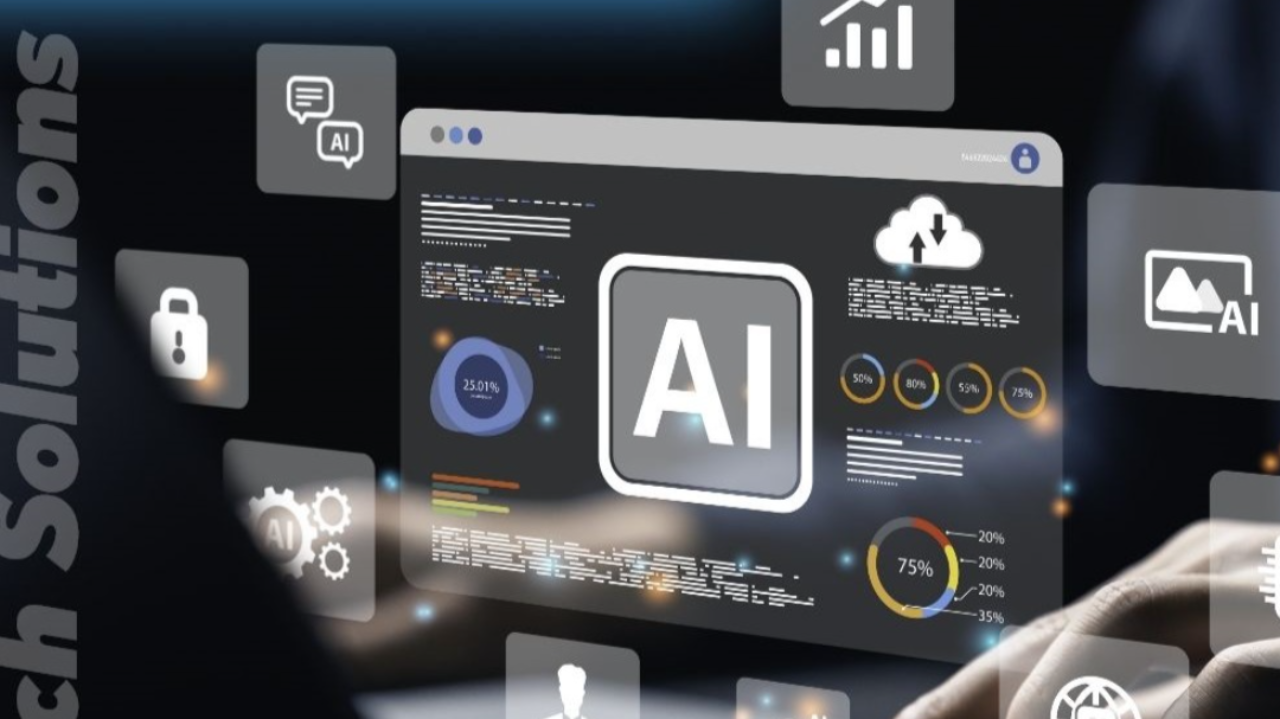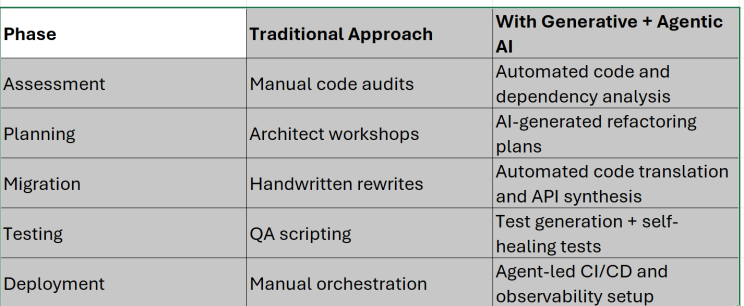From Legacy Systems to SOA and Web Technologies: Accelerating Modernization with Generative and Agentic AI

Enterprises anchored in legacy systems face mounting pressure to modernize driven by digital transformation, customer expectations, and rapid innovation cycles. Transitioning from monolithic applications to modular Service-Oriented Architecture (SOA) and web-based technologies is no longer optional, it's foundational to staying competitive. This applies to legacy technology debt such as COBOL, IMS DB/DC, CICS, JCL which can not only be read by the Gen Ai tools to write requirements document but it can also be converted to new technologies seamlessly.
This white paper explores how Generative AI and Agentic AI are streamlining this transformation. These new paradigms of artificial intelligence do more than automate as they co-create, recommend, adapt, and execute across the modernization lifecycle. The result: accelerated migration, minimized risk, and future-proof technology foundations.
1. The Legacy Problem
Legacy systems, often developed decades ago, were built for stability and not adaptability. Today, they pose critical challenges:
- Tightly coupled architectures inhibit scalability and integration
- Obsolete technology stacks create dependency on shrinking talent pools
- High maintenance costs divert resources from innovation
- Inability to support modern APIs, cloud-native services, or web applications
The need for agile, modular, and interoperable systems has never been more urgent.
2. SOA and Web Technology: The Modern Foundation
Modernization often involves transitioning to:
- Service-Oriented Architecture (SOA): Modular services with defined interfaces, enabling reuse and interoperability
- Web Technologies: Browser-based UIs, REST APIs, cloud-native backends, and microservices that foster user-centric and scalable solutions
While beneficial, these transitions are complex, costly, and risky unless accelerated through intelligent automation.
3. Introducing Generative and Agentic AI
Generative AI: Generative AI models can understand and generate software artifacts. For legacy modernization, it can:
- Translate COBOL, Mainframe, or Oracle Forms to modern languages (e.g., Java, C#, Python)
- Reverse-engineer code to generate architecture diagrams and service interfaces
- Convert requirements into SOA-based web service specifications and UI wireframes
- Generate test cases, validation data, and performance benchmarks from documentation
Agentic AI : Agentic AI goes a step further as it is goal-driven and autonomous. These AI agents can orchestrate full workflows:
- Analyze legacy system behavior and suggest modular SOA components
- Deploy code generation, refactoring, testing, and CI/CD actions across platforms
- Collaborate with developers, tools, and services via APIs or even natural language
- Monitor performance and user feedback post-deployment for iterative tuning
Together, these AI paradigms form a self-adaptive modernization engine.
4. Modernization Powered by AI: A Phased Approach

Modernization Approach
5. Benefits for Enterprises
- Speed: 3x faster migration cycles
- Accuracy: AI-based code transformation with traceability
- Cost Reduction: Lower manual engineering and rework costs
- Risk Mitigation: Predictive analytics and validation
- Scalability: AI-generated APIs and modular components
- Resilience: Agentic feedback loops improve service quality over time
“Generative and Agentic AI aren’t just tools—they’re collaborators. They bring intelligence and autonomy to what was once a costly, linear process.”
— Varchasvi Shankar, CEO, V2Soft
6. Navigating the Journey: Strategic Recommendations
To embrace this new frontier, organizations should:
- Build a modernization center of excellence (CoE) that includes AI specialists
- Choose platforms with LLM and agent integration capabilities
- Start small: pilot one legacy module to web or microservices with AI support
- Establish robust governance and AI oversight to ensure security, explainability, and regulatory compliance
7. Future Outlook
With advancements in AI reasoning and orchestration, the path from legacy to web-native and AI-enhanced applications will soon be self-navigating. Organizations that embrace this shift early will gain:
- A more agile, composable IT architecture
- Faster time to market with personalized user experiences
- Sustainable competitive advantage through AI-driven transformation
About V2Soft and Sanciti AI
At V2Soft, we’re leading the modernization wave with frameworks like Sanciti AI, our proprietary generative AI framework. Many customers are already reaping the benefits of legacy modernization with Sanciti AI.
Sanciti AI empowers enterprises to:
- Automate testing, code refactoring, and service generation
- Derive insights from legacy assets
- Accelerate the move to SOA and web-native architectures
If your enterprise is planning a legacy overhaul, Sanciti AI is your tool for transformation with intelligence, speed, and confidence.
Written By: Varchasvi Shankar